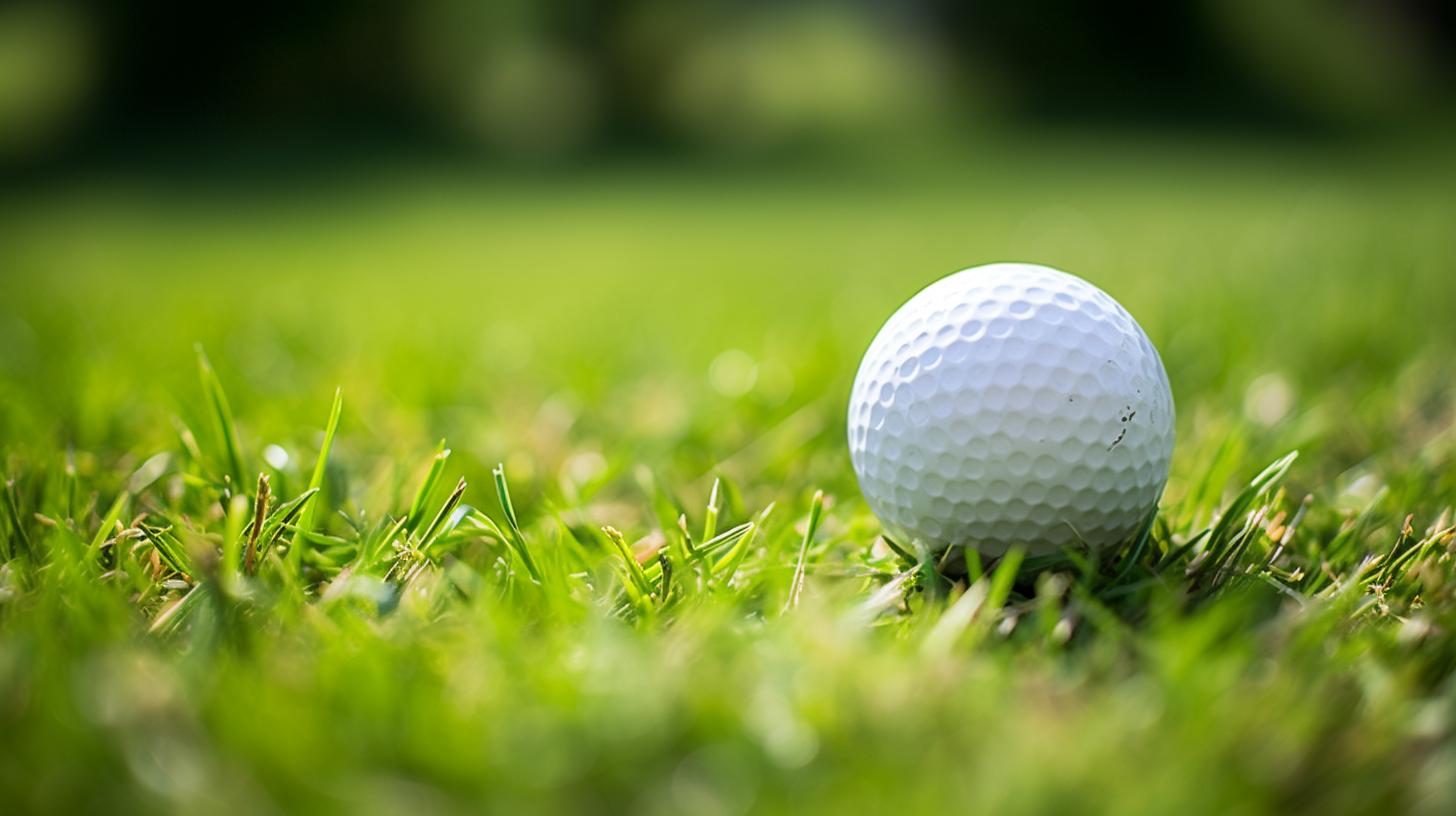
The PGA Tour Golf Ball Roll Back has been a hot topic of debate in the world of professional golf. With advancements in technology and changes in equipment, golf balls have been able to travel further distances than ever before, creating both excitement and concern within the industry.
This article aims to provide an in-depth understanding of the concept of a golf ball roll back, examining its history, impact, pros and cons, as well as alternative solutions and its potential effects on the economic and cultural aspects of the sport.
In recent years, there have been discussions about potential regulations to roll back the distance that golf balls are able to travel. This has sparked conversations among professional golfers, industry experts, and enthusiasts alike regarding the future of the game. The PGA Tour Golf Ball Roll Back is a complex issue with far-reaching implications for the sport as a whole.
This article will delve into the historical background of golf ball distance regulations and explore how advancements in technology have contributed to increased distances. Additionally, it will examine the reactions from professional golfers and industry experts regarding this proposed change, as well as alternative solutions that have been suggested. Lastly, it will consider the potential economic and cultural impact that a golf ball roll back could have on the sport.
The History of Golf Ball Distance Regulations
Early Regulations
The regulation of golf ball distance is not a new phenomenon. In fact, the issue of controlling the distance golf balls can travel has been a topic of discussion for over a century. The United States Golf Association (USGA) and the R&A, the two organizations responsible for setting the rules of golf, have periodically adjusted regulations related to equipment to ensure that the game remains challenging and fair for all players.
Modern Changes
One of the most significant changes in golf ball distance regulations occurred in 1976 when the USGA introduced a restriction on the initial velocity of golf balls. This was followed by further adjustments in 2002, with limits placed on overall distance performance. These changes were intended to address concerns about courses becoming obsolete due to rapidly advancing technology in club and ball design.
Response to Technological Advancements
Advancements in materials and construction technology have continued to drive substantial increases in golf ball distance. In response, there has been ongoing debate within the golfing community about whether additional regulations are necessary to prevent courses from becoming too short or too easy for professional players. The discussion around implementing a PGA Tour golf ball roll back has gained momentum as a potential solution to address these concerns while preserving some of the sport’s traditional elements.
The Impact of Technology on Golf Ball Distance
Technology has played a significant role in the evolution of golf equipment, including the advancement of golf ball design and performance. The introduction of new materials, aerodynamics, and manufacturing processes has led to golf balls that can be hit farther and with more control than ever before. This has posed a challenge for the governing bodies of golf, as they attempt to maintain the balance between skill and technology in the sport.
The development of multi-layered construction, high-density cores, and advanced dimple patterns has resulted in golf balls that can achieve longer distances with less effort. Additionally, advancements in club head design and shaft technology have also contributed to increased swing speeds and overall distance. As a result, players are able to hit shots with greater power and accuracy than previous generations.
The use of launch monitors and advanced simulators has allowed manufacturers to fine-tune their products for maximum distance and control. This data-driven approach has led to constant improvements in golf ball technology, leaving regulators grappling with the need to rein in the distance gains without stifling innovation in the industry.
The ongoing debate over whether technology should continue to dictate the game’s future or if there should be a roll back on certain advancements remains a hot topic within the professional golf community.
- The introduction of multi-layered construction
- Advancements in club head design
- The use of launch monitors and simulators
Pros and Cons of Implementing a Golf Ball Roll Back
Pros
One of the main arguments in favor of implementing a golf ball roll back on the PGA Tour is to address the issue of distance inflation. By rolling back the distance that golf balls travel, courses can be better suited for competitive play, leading to more strategic and challenging rounds. This could ultimately lead to a more level playing field among professional golfers, as it would place less emphasis on sheer power and more on skill and accuracy.
Another advantage of implementing a golf ball roll back is its potential impact on environmental sustainability. With reduced distance, golf courses may require less land and resources for maintenance, leading to lower environmental impact. Additionally, decreased distance could potentially alleviate concerns about residential encroachment onto golf course properties.
Cons
On the other hand, there are also valid concerns regarding the implementation of a golf ball roll back. One major drawback is the potential impact on equipment manufacturers and the overall economy of the golf industry. A significant change in equipment regulations could lead to financial losses for companies specializing in high-performance golf balls and clubs, as well as job losses throughout the industry.
Furthermore, some argue that a golf ball roll back could hinder innovation in the sport. Limiting technology advancements may discourage research and development within the golf industry, potentially stifling progress in equipment design and materials. Additionally, there are worries that reducing distance could make the game less exciting for fans and viewers who appreciate long drives and dramatic shots.
Ultimately, weighing these pros and cons is crucial in considering whether a golf ball roll back is the most appropriate solution for addressing distance-related issues in professional golf.
Reactions From Professional Golfers and Industry Experts
Professional golfers and industry experts have varying opinions on the proposed PGA Tour golf ball roll back. Many professional golfers have voiced concerns about how a roll back could impact their game and the sport as a whole. Some argue that a roll back would detract from the excitement of the game, as well as diminish the accomplishments of current players who have achieved great distances with their shots.
On the other hand, some industry experts support the idea of implementing a golf ball roll back in order to preserve the integrity of the game and maintain the challenge of golf courses. They believe that advancements in technology have resulted in an unfair advantage for modern players, ultimately changing the way golf is played at its core.
One prominent voice in favor of a roll back is legendary golfer Jack Nicklaus, who has publicly expressed his support for regulations that would limit distance. He believes that revising distance regulations is necessary to ensure that skill and strategy remain essential components of the sport.
Overall, there is clearly a divide among professional golfers and industry experts regarding the potential implementation of a PGA Tour golf ball roll back. The debate will likely continue as stakeholders consider the impact such measures would have on the future of competitive golf.
Exploring Alternative Solutions to Golf Ball Distance Issues
The debate surrounding the regulation of golf ball distance on the PGA Tour has sparked discussions about alternative solutions to address the issue. As advancements in technology and equipment continue to impact the game, many have proposed alternative measures to control distance without simply rolling back the golf ball. One potential solution that has gained traction is adjusting course design and layout.
By strategically modifying course layouts, architects can create challenges that require players to strategize and show their skill beyond hitting the ball long distances. This could involve adding more hazards, narrowing fairways, or strategically placing bunkers and trees to force players to carefully consider their shots. Additionally, altering green complexes and pin placements can also create difficulties for players, requiring precision in approach shots rather than solely relying on power.
Another alternative solution being considered is implementing varying degrees of rough throughout courses. Thicker rough can penalize errant tee shots and prompt players to focus on accuracy rather than pure distance. Furthermore, introducing different grass types within rough areas can add complexity to approach shots, as players will need to adapt their strategy based on the lie of their ball.
Implementing these alternative solutions could not only address concerns about golf ball distance but also enhance the strategic and tactical elements of the game. By reshaping course design and incorporating varying rough conditions, golf can continue to evolve while maintaining its essence as a test of skill and precision.
| Alternative Solution | Potential Impact |
|---|---|
| Course Design Modification | Enhances strategic considerations for players. |
| Varying Rough Conditions | Promotes accuracy over pure distance. |
The Economic and Cultural Impact of a Golf Ball Roll Back
The economic and cultural impact of a potential PGA Tour golf ball roll back is a topic that has generated a great deal of discussion and debate within the golfing community. This potential change would have far-reaching effects on various aspects of the sport, from equipment sales to the overall experience for players and fans alike.
From an economic standpoint, a roll back could have significant implications for golf equipment manufacturers. Any reduction in the distance that golf balls can travel would likely lead to decreased demand for the current long-distance balls on the market.
This could result in a shift in focus for manufacturers towards developing new, compliant products. On the other hand, some experts argue that this change could stimulate innovation and create new opportunities for manufacturers to differentiate their products in a more restricted market.
Culturally, a golf ball roll back would also impact the overall experience of playing and watching the sport. For players at all levels, adjusting to new distance regulations would require changes not only in technique but also potentially in course design and strategy.
Additionally, fans of professional golf may need to adjust their expectations for scoring and performance if distances are reduced. However, there is also an opportunity for a roll back to bring greater emphasis on accuracy and shot-making skills, which some argue would add depth to the game.
| Economic Impact | Cultural Impact |
|---|---|
| A potential reduction in demand for current long-distance balls | Changes in player technique and course design |
| New opportunities for manufacturers to innovate within restricted market | Adjustment of expectations for scoring and performance by fans |
Conclusion
In conclusion, the debate over implementing a golf ball roll back on the PGA Tour has sparked a significant amount of discussion and contemplation. The potential impact on the sport’s history, traditions, and economic landscape is not to be taken lightly. While some argue that regulating golf ball distance could help restore a balance between skill and technology, others believe it could stifle innovation and drive up costs for both players and fans.
Regardless of the outcome, it is evident that the future of golf ball regulations on the PGA Tour will continue to be a topic of great interest and scrutiny. The decision will not only affect professional golfers but also have far-reaching implications for industry manufacturers, sponsors, and fans. Finding an equitable solution that addresses concerns about distance while also supporting growth in the sport will require careful consideration and collaboration from all stakeholders involved.
It is essential to seek compromise and explore alternative solutions that preserve the integrity of the game while embracing technological advancements. As discussions continue, it is crucial for all parties to carefully consider the long-term implications of any decisions made regarding golf ball regulations. Only time will tell whether a compromise can be reached or if alternative strategies will need to be implemented to address concerns about golf ball distance on the PGA Tour.






